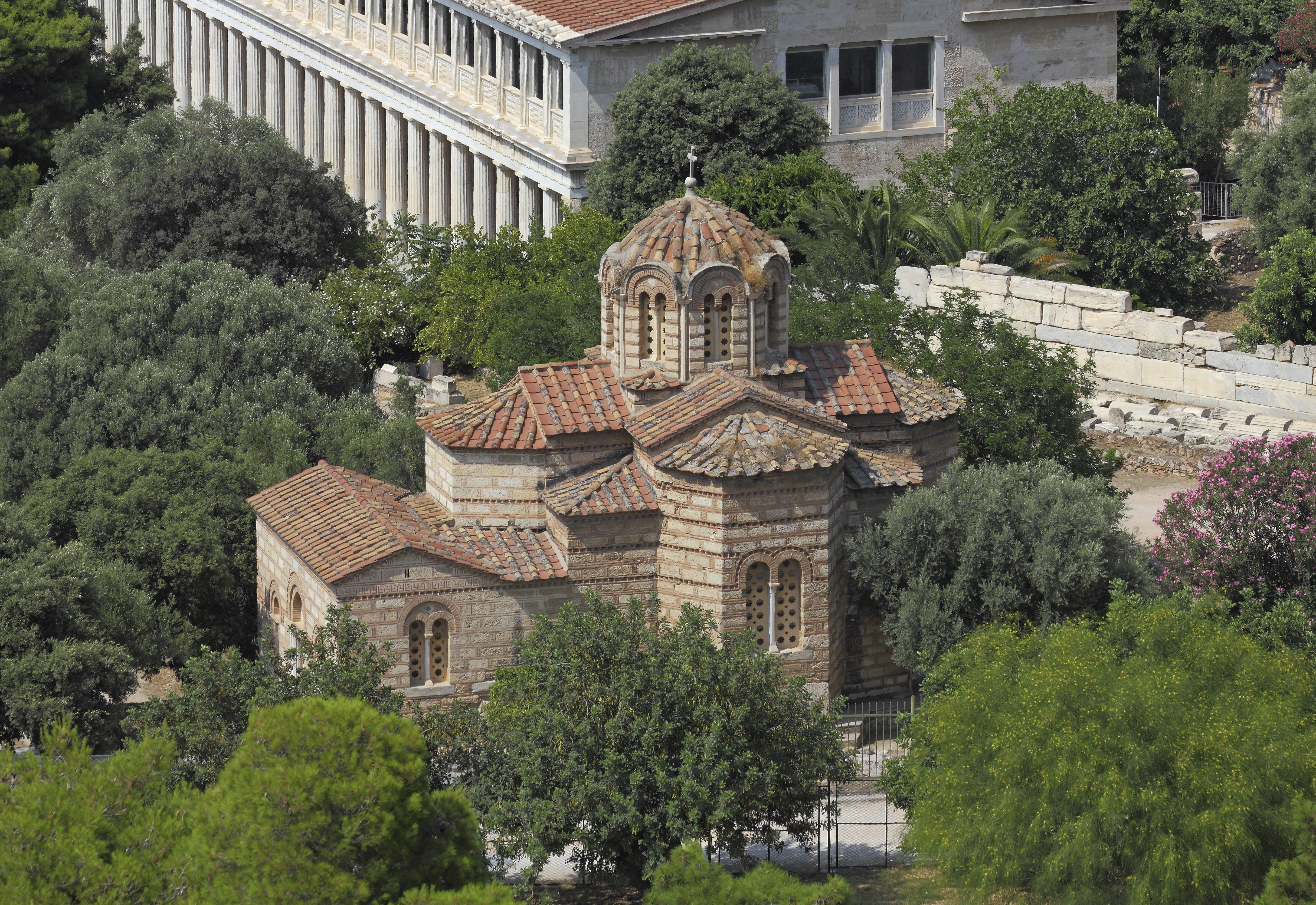Church of the Holy Apostles, Athens on:
[Wikipedia]
[Google]
[Amazon]
 The Church of the Holy Apostles, also known as Holy Apostles of Solaki ( el, Άγιοι Απόστολοι Σολάκη), is located in the
The Church of the Holy Apostles, also known as Holy Apostles of Solaki ( el, Άγιοι Απόστολοι Σολάκη), is located in the
ASCSA Church of the Holy Apostles Overview
Byzantine church buildings in Athens 10th-century churches in Greece Church buildings with domes 10th-century establishments in the Byzantine Empire {{Greece-EO-church-stub
 The Church of the Holy Apostles, also known as Holy Apostles of Solaki ( el, Άγιοι Απόστολοι Σολάκη), is located in the
The Church of the Holy Apostles, also known as Holy Apostles of Solaki ( el, Άγιοι Απόστολοι Σολάκη), is located in the Ancient Agora of Athens
The ancient Agora of Athens (also called the Classical Agora) is the best-known example of an ancient Greek agora, located to the northwest of the Acropolis and bounded on the south by the hill of the Areopagus and on the west by the hill kn ...
, Greece
Greece,, or , romanized: ', officially the Hellenic Republic, is a country in Southeast Europe. It is situated on the southern tip of the Balkans, and is located at the crossroads of Europe, Asia, and Africa. Greece shares land borders wi ...
, next to the Stoa of Attalos
The Stoa of Attalos (also spelled Attalus) was a stoa (covered walkway or portico) in the Agora of Athens, Greece. It was built by and named after King Attalos II of Pergamon, who ruled between 159 BC and 138 BC. The current building was rec ...
, and can be dated to around the late 10th century.
History
"Solakis" may be the family name of those who sponsored a renovation of the church in the Ottoman Period, or from "Solaki" for the densely populated area around the church in the 19th century. The church is particularly significant as the only monument in the Agora, other than theTemple of Hephaestus
The Temple of Hephaestus or ''Hephaisteion'' (also "Hephesteum" or "Hephaesteum"; grc, Ἡφαιστεῖον, ell, Ναός Ηφαίστου, and formerly called in error the Theseion or "Theseum"; grc, Θησεῖον, ell, Θησείο), ...
, to survive intact since its foundation, and for its architecture: it was the first significant church of the Middle Byzantine
The Byzantine Empire, also referred to as the Eastern Roman Empire or Byzantium, was the continuation of the Roman Empire primarily in its eastern provinces during Late Antiquity and the Middle Ages, when its capital city was Constantinopl ...
period in Athens
Athens ( ; el, Αθήνα, Athína ; grc, Ἀθῆναι, Athênai (pl.) ) is both the capital and largest city of Greece. With a population close to four million, it is also the seventh largest city in the European Union. Athens dominates a ...
, and marks the beginning of the so-called "Athenian type", successfully combining the simple four-pier with the cross-in-square
A cross-in-square or crossed-dome plan was the dominant architectural form of middle- and late-period Byzantine churches. It featured a square centre with an internal structure shaped like a cross, topped by a dome.
The first cross-in-square chu ...
forms. The church was built partly over a 2nd-century '' nymphaion'', and was restored to its original form between 1954 and 1957.
From evidence of various repairs and reconstructions, four distinct building phases can be distinguished. The original floorplan is a cross with apse
In architecture, an apse (plural apses; from Latin 'arch, vault' from Ancient Greek 'arch'; sometimes written apsis, plural apsides) is a semicircular recess covered with a hemispherical vault or semi-dome, also known as an '' exedra''. ...
s on four sides and a narthex
The narthex is an architectural element typical of early Christian and Byzantine basilicas and churches consisting of the entrance or lobby area, located at the west end of the nave, opposite the church's main altar. Traditionally the narth ...
on the west side, with four columns supporting a dome
A dome () is an architectural element similar to the hollow upper half of a sphere. There is significant overlap with the term cupola, which may also refer to a dome or a structure on top of a dome. The precise definition of a dome has been a m ...
. The altar
An altar is a table or platform for the presentation of religious offerings, for sacrifices, or for other ritualistic purposes. Altars are found at shrines, temples, churches, and other places of worship. They are used particularly in pagan ...
and floor were originally of marble
Marble is a metamorphic rock composed of recrystallized carbonate minerals, most commonly calcite or dolomite. Marble is typically not foliated (layered), although there are exceptions. In geology, the term ''marble'' refers to metamorphose ...
. Tiles on the outer walls have Kufic
Kufic script () is a style of Arabic script that gained prominence early on as a preferred script for Quran transcription and architectural decoration, and it has since become a reference and an archetype for a number of other Arabic scripts. It ...
-like decorative patterns.
A few surviving wall paintings in the central aisle date to the 17th century, and paintings from nearby churches were also placed elsewhere within the church.
References
External links
ASCSA Church of the Holy Apostles Overview
Byzantine church buildings in Athens 10th-century churches in Greece Church buildings with domes 10th-century establishments in the Byzantine Empire {{Greece-EO-church-stub